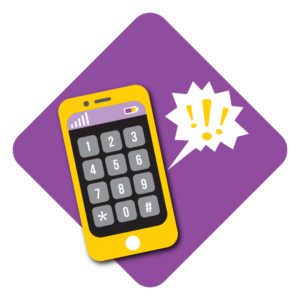“I think it’s really confusing,” says Trish Cortes, the county’s executive director of Community Mental Health, of the proliferation of emergency phone numbers locally. “It’s really hard to get these numbers recognized in our community”—and even more so “when they start having overlapping similar purposes.”
 The county already has the standard 911 number for police and fire emergencies. Then there’s the United Way’s 211 number for social services. This summer, the National Suicide Prevention Lifeline’s 988 number will be activated locally. And last fiscal year alone, CMH responded to more than 35,000 calls to its own mental health number: (734) 544–3050.
The county already has the standard 911 number for police and fire emergencies. Then there’s the United Way’s 211 number for social services. This summer, the National Suicide Prevention Lifeline’s 988 number will be activated locally. And last fiscal year alone, CMH responded to more than 35,000 calls to its own mental health number: (734) 544–3050.
“We’ve had a twenty-four-hour number for many years,” says Cortes, but volume tripled as they were able to expand services following approval of the 2017 mental health and public safety millage. They get the word out by including their number in all their brochures, advertisements, and articles.
Though the suicide prevention line will have its own number, every 988 call will be routed through the Washtenaw County Sheriff’s Department’s Metro-Dispatch. “We’ll take the call,” says sheriff Jerry Clayton, “and triage it the way we need to—there’s very little delay. [Operators] do one-button transfers now—EMS or fire [or the] CMH crisis line.”
“I wouldn’t say necessarily that we need 988,” says Cortes. “But that number’s going to essentially come right to our phone number. All it does is really help us respond locally.”
The Coalition for Re-envisioning Our Safety, which is lobbying to manage the city’s planned unarmed safety response team, also wants its own phone number—and even its own dispatchers, to avoid any connection to law enforcement. Cortes questions the wisdom of that: “I just think it sounds really, really messy,” she says.
Though 988 calls will be passed on to existing providers, Ann Arbor police chief Mike Cox sees an upside to a separate number: “It is a good thing to give the public more options for [accessing] services,” he says. “I think that’s a tremendous idea and hopefully very helpful.”
Cox cautions, though, that “the issue is how well-publicized these numbers are, and what specific services do they provide, and do people understand that clearly? Because if they don’t understand it clearly, that leaves room for confusion.”
—
A different emergency number
To the Observer:
In the UpFront section of the Ann Arbor Observer published in April, James Leonard asked whether “more emergency numbers” is a “help or a hindrance,” presumably to community safety, though he never says so explicitly. Leonard begins the piece with a quote from an interviewee stating that multiple emergency phone numbers is “really confusing.”
As organizers with CROS—a multi-racial collaboration of community members who are advocating for an unarmed, nonpolice response program in Ann Arbor—we suggest that a separate number for unarmed, non-police response isn’t simply a “proliferation of emergency phone numbers,” but a fundamentally different type of number, for a different type of service. And, as programs in other cities and counties have shown, community members are likely to use numbers to services that actually meet their needs.
Data show that unarmed, nonpolice response programs can be successful, save taxpayer money, be financially stable, and, most importantly, offer alternatives to a police response for those with legitimate reasons to fear law enforcement, such as deportation or fear of race-based police violence. While it’s true that communities need an incentive to remember a new phone number, we believe that the need for an emergency response that does not involve law enforcement—and hence reduces the potential to escalate into violence, deportation, or contact with the criminal legal system—serves as such an incentive.
Further, many community members have already committed myriad different numbers to memory. Sometimes these are community-based organizations with proven track records of community support. In the immigrant community, the WICIR phone number has answered immigration-related emergency calls for over a decade, without ever involving the police, and relying instead on social workers, advocates, translators and community members with deep ties to the neighborhoods from which calls originate. Other times, these numbers are the pastors, counselors, or community advocates we trust to get us through a crisis that we believe police could escalate. People learn those numbers and use them.
As Police Chief Mike Cox shared, more options are “a good thing.” If community members prefer to rely on 911 and do not feel the need to personally use an unarmed, nonpolice response number, that is certainly fine. But there is no reason to remove the option for those whose life circumstances steer them away from armed law enforcement as the solution to their crisis. Instead, let’s proudly offer a program that is evidence-based, proven to be successful, and centers community care. Learning a new phone number is a minute and inconsequential part of the exchange. We don’t think people will be confused at all.
Sincerely,
William D. Lopez & Lisa Jackson

